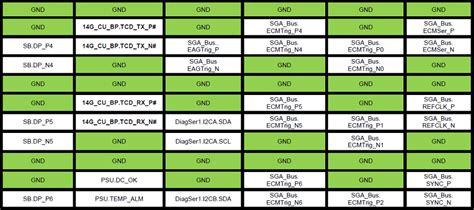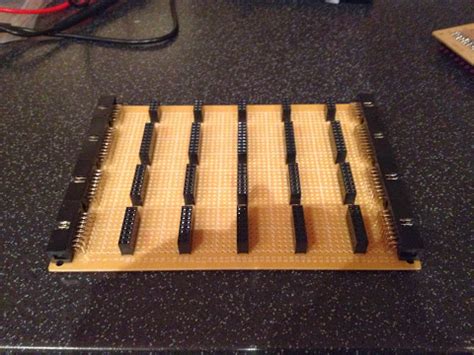Introduction to Backplane Routing
Backplane routing is a crucial aspect of modern network design, particularly in high-speed gigabit copper and fiber networks. It involves the efficient and reliable transmission of data between various components within a network system, such as switches, routers, and servers. The backplane serves as the central communication backbone, connecting these components and enabling the exchange of data at high speeds.
In this article, we will explore the concept of backplane routing topology in the context of gigabit copper and fiber networks. We will delve into the different types of backplane architectures, their advantages and disadvantages, and the factors to consider when designing a backplane routing system. Additionally, we will discuss the role of copper and fiber optic technologies in backplane routing and their impact on network performance.
Backplane Routing Architectures
1. Bus Topology
The bus topology is one of the simplest and most commonly used backplane routing architectures. In this topology, all components are connected to a single, shared communication channel called the bus. Data is transmitted over the bus, and each component listens to the bus to determine if the data is intended for it.
Advantages:
– Simple and cost-effective to implement
– Easy to add or remove components from the network
– Suitable for small to medium-sized networks
Disadvantages:
– Limited bandwidth and scalability
– Single point of failure – if the bus fails, the entire network goes down
– Contention issues when multiple components attempt to transmit data simultaneously
2. Star Topology
In a star topology, each component is connected to a central hub or switch. All communication between components passes through this central device, which acts as a relay point.
Advantages:
– Centralized management and control
– Easy to isolate and troubleshoot faults
– High scalability – new components can be added without disrupting the entire network
Disadvantages:
– Dependence on the central hub or switch – if it fails, the entire network is affected
– Higher cost compared to bus topology due to the need for additional hardware
3. Mesh Topology
A mesh topology involves interconnecting each component with every other component in the network. This provides multiple paths for data transmission, ensuring high redundancy and fault tolerance.
Advantages:
– High reliability and fault tolerance
– Load balancing and efficient utilization of network resources
– Reduced latency and improved performance
Disadvantages:
– Complex implementation and higher cost
– Increased cabling requirements
– Difficult to troubleshoot and maintain

Gigabit Copper and Fiber Technologies
1. Gigabit Copper
Gigabit copper, also known as Gigabit Ethernet over copper, is a technology that enables the transmission of gigabit-speed data over standard copper cabling. It uses advanced Modulation Techniques and signal processing to achieve high data rates.
Advantages:
– Cost-effective and widely available
– Backward compatibility with existing Ethernet infrastructure
– Suitable for short to medium-distance connections
Disadvantages:
– Limited bandwidth compared to fiber optic technology
– Susceptible to electromagnetic interference (EMI) and crosstalk
– Distance limitations – typically up to 100 meters
2. Fiber Optic Technology
Fiber optic technology uses light pulses to transmit data over thin strands of glass or plastic fibers. It offers several advantages over copper-based solutions.
Advantages:
– Extremely high bandwidth and data rates
– Immune to EMI and crosstalk
– Long-distance transmission capabilities – up to several kilometers
– Secure and difficult to tap or intercept
Disadvantages:
– Higher cost compared to copper-based solutions
– Requires specialized equipment and skilled installation
– Fragility of fiber optic cables

Factors to Consider in Backplane Routing Design
When designing a backplane routing system for gigabit copper and fiber networks, several factors need to be taken into account:
-
Bandwidth Requirements: Determine the current and future bandwidth needs of the network to ensure the backplane can handle the expected data rates.
-
Scalability: Consider the potential for network expansion and choose a topology that allows for easy addition of new components.
-
Reliability and Redundancy: Assess the criticality of the network and incorporate redundancy measures to minimize downtime and ensure high availability.
-
Cost: Evaluate the cost implications of different backplane routing architectures and technologies, considering both initial implementation and long-term maintenance costs.
-
Distance and Environment: Take into account the physical distance between components and the environment in which the network will operate to select the appropriate copper or fiber technology.

Backplane Routing Performance Metrics
To evaluate the performance of a backplane routing system, several key metrics are used:
-
Throughput: Measured in bits per second (bps), throughput represents the amount of data that can be transmitted over the backplane in a given time period.
-
Latency: Latency refers to the delay between the transmission and reception of data. Low latency is crucial for real-time applications and high-performance networks.
-
Bit Error Rate (BER): BER measures the number of bit errors that occur during data transmission. A low BER indicates a reliable and error-free backplane routing system.
-
Jitter: Jitter represents the variation in latency over time. Low jitter is essential for maintaining stable and consistent data transmission.
Table: Comparison of Backplane Routing Architectures
| Architecture | Advantages | Disadvantages |
|---|---|---|
| Bus | – Simple and cost-effective | – Limited bandwidth and scalability |
| – Easy to add or remove components | – Single point of failure | |
| – Contention issues | ||
| Star | – Centralized management and control | – Dependence on the central hub or switch |
| – Easy to isolate and troubleshoot faults | – Higher cost compared to bus topology | |
| – High scalability | ||
| Mesh | – High reliability and fault tolerance | – Complex implementation and higher cost |
| – Load balancing and efficient resource usage | – Increased cabling requirements | |
| – Reduced latency and improved performance | – Difficult to troubleshoot and maintain |
Frequently Asked Questions (FAQ)
- What is backplane routing?
-
Backplane routing refers to the process of transmitting data between components within a network system using a central communication backbone called the backplane.
-
What are the advantages of using fiber optic technology in backplane routing?
-
Fiber optic technology offers high bandwidth, immunity to EMI and crosstalk, long-distance transmission capabilities, and enhanced security compared to copper-based solutions.
-
How does the bus topology differ from the star topology in backplane routing?
-
In a bus topology, all components are connected to a single, shared communication channel, while in a star topology, each component is connected to a central hub or switch that acts as a relay point for communication.
-
What factors should be considered when designing a backplane routing system?
-
Factors to consider include bandwidth requirements, scalability, reliability and redundancy, cost, distance, and the operating environment.
-
What are the key performance metrics used to evaluate backplane routing systems?
- Key performance metrics include throughput, latency, bit error rate (BER), and jitter. These metrics help assess the speed, reliability, and consistency of data transmission within the backplane routing system.
Conclusion
Backplane routing topology plays a vital role in the design and performance of gigabit copper and fiber networks. Understanding the different backplane architectures, their advantages and disadvantages, and the factors to consider when designing a backplane routing system is essential for network engineers and administrators.
Gigabit copper and fiber optic technologies offer distinct benefits and challenges in backplane routing. While copper-based solutions are cost-effective and widely available, fiber optic technology provides higher bandwidth, immunity to EMI, and long-distance transmission capabilities.
When designing a backplane routing system, it is crucial to consider factors such as bandwidth requirements, scalability, reliability, cost, and the operating environment. By carefully evaluating these factors and selecting the appropriate backplane architecture and technology, organizations can ensure optimal network performance, reliability, and scalability.
As data demands continue to grow and network complexities increase, effective backplane routing will remain a critical aspect of network design. By staying informed about the latest advancements in backplane routing technologies and best practices, network professionals can build robust and efficient networks that meet the evolving needs of their organizations.

No responses yet